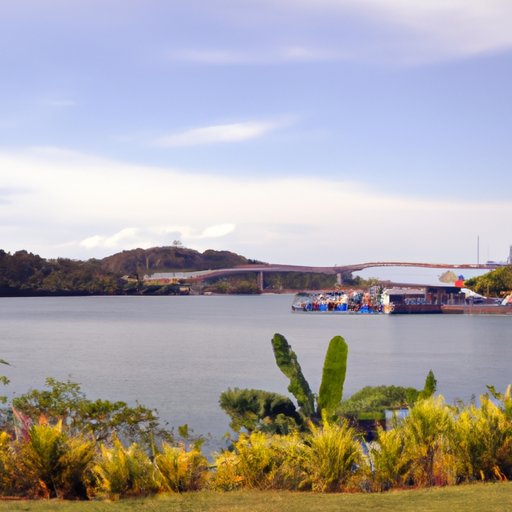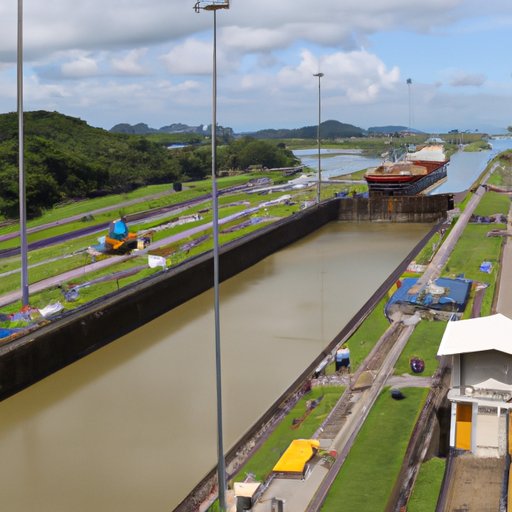Introduction
The Panama Canal, a 48-mile-long artificial waterway connecting the Atlantic and Pacific oceans, is a vital waterway for global trade and transportation. Since its opening in 1914, the canal has revolutionized maritime transportation, enabling ships to travel between oceans using the shortcut, reducing transportation time and cost, and connecting major trading partners around the world. In this article, we’ll explore the impact and significance of the Panama Canal on global trade and transportation, its history, economic and geopolitical implications, the challenges and opportunities it faces in the future, and its environmental impact and importance in preserving the region’s biodiversity.
The Impact of the Panama Canal on Global Trade: An Overview
The creation of the Panama Canal had a significant impact on global trade by reducing transportation time and cost. Before the canal’s construction, ships had to travel around the southern tip of South America, a journey that could take several months and posed significant challenges, such as rough seas, strong currents, and extreme weather conditions. With the canal’s opening, ships could traverse between the oceans in just a few hours, saving time and reducing transportation costs. Today, the canal continues to play a crucial role in global trade, connecting major trading partners, such as the US and Asia, and enabling the transportation of goods between the East and West coasts of the US, Europe and Asia.
How the Panama Canal Revolutionized Maritime Transportation
The Panama Canal revolutionized maritime transportation by providing a shortcut between oceans, significantly reducing transportation time and cost. The canal enables ships to travel from the Atlantic to the Pacific, and vice versa, through a series of locks and artificial lakes that raise and lower them to the water level of each canal section. The engineering and construction challenges that were overcome to create the canal were enormous, including the excavation of the Culebra Cut, a narrow and steep channel through the Continental Divide, and the creation of the Gatun Lake, the largest artificial lake in the world at the time. The canal’s creation had a profound impact on the shipping industry, making it faster, safer, and more efficient.
From Idea to Reality: The History and Significance of the Panama Canal
The idea of creating a canal through Panama dates back to the early 16th century when Spanish explorers first envisioned it as a safer and faster route between oceans. It wasn’t until the late 19th century that the project gained momentum with the French attempt to construct it, which failed due to various reasons, including engineering challenges and diseases, such as malaria and yellow fever. The US took over the project in 1904 and completed it ten years later, after overcoming many political and economic challenges, such as the acquisition of the Canal Zone, land disputes, and labor strikes. The canal’s significance in the context of Panama’s history with the US is complex, tied to issues of sovereignty, economic development, and social justice.
The Economic and Geopolitical Implications of the Panama Canal
The Panama Canal has played a pivotal role in shaping the economic and geopolitical realities of the countries that use it. The canal’s tolls generate significant revenue for Panama, accounting for about six percent of its GDP. The tolls also affect the economy and trade relations between countries that use the canal, reflecting issues of power, influence, and competition. Events in the canal’s history, such as the 1989 US invasion of Panama and the 1977 signing of the Torrijos-Carter Treaty, have had a lasting effect on regional politics and diplomacy.
The Future of the Panama Canal: Challenges and Opportunities
The Panama Canal faces many challenges and opportunities in the future. Current projects, such as the expansion of the canal’s locks and channels, aim to improve the canal’s capacity and efficiency, allowing larger and more numerous ships to pass through. However, the canal faces competition from alternative shipping routes, such as the Northern Sea Route and the Arctic Ocean, and climate change poses a significant threat to its sustainability. The canal’s expansion creates opportunities for Panama to further develop its economy and infrastructure, but it also raises questions about its environmental impact and social justice.

The Environmental Impact of the Panama Canal and its Importance to Ecosystems and Biodiversity
The operations of the Panama Canal have an adverse impact on the ecosystems and biodiversity around it. The canal’s construction and operation led to the destruction of large areas of rainforest, the displacement of indigenous communities, and the alteration of regional water cycles. The canal’s water quality and sedimentation also affect the marine and freshwater ecosystems around it, threatening the health and survival of many species. Efforts to mitigate the environmental impact of the canal, such as reforestation and alternative energy use, are ongoing, but some argue that they are insufficient.
Conclusion
The Panama Canal is a vital waterway for global trade and transportation, revolutionizing the shipping industry and connecting major trading partners around the world. Its history, economic and geopolitical implications, challenges and opportunities, and environmental impact and importance provide valuable insights into the complex interplay between human activities and natural systems. As a symbol of human ingenuity and ambition, the Panama Canal inspires wonder and awe, reminding us of our capacity to shape and transform the world around us while urging us to do it responsibly and sustainably.
